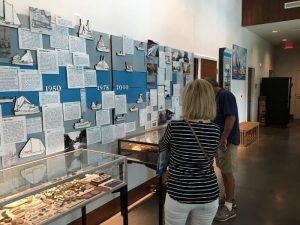Kudos to LYRASIS team members Tom F. Clareson and Annie Peterson for their great work on this important project.
Originally published on msnewsnow.com
BILOXI, MS (WLOX) – First responders almost always arrive before anyone else at any disaster scene. They understand that preventing the past from being destroyed is very important, a lesson learned after Hurricane Katrina.
Thanks to the American Institute for Conservation, Coast first responders are better prepared to save not only lives during times of disaster, but also rich history.

“A community’s history is central to their identity. So we’ve noticed in other communities during the recovery process during disasters, having that sense of their heritage restored quickly is key to the communities health,” Jessica Unger with the American Institute for Conservation explained.
Communication is key during times of trouble, according to Rupert Lacy the Harrison County Emergency Management Director.
“One of the things in this conference is to kind of put the emergency responders into context and networking with the cultural environment so that we can preserve what’s left of our heritage. And that was something we didn’t do going on eleven years ago during Katrina,” Lacy said.
A proactive relationship between first responders and preservationists is vital.
“It means a lot to all the cultural institutions here on the Gulf Coast. We’re going to learn today who to turn to, and what to do, when we’re hit by a hurricane or another emergency,” said Robin Krohn-David, director of the Seafood Industry Museum.
When it comes to preserving history in the event of future storms, just like everything else in life, there are priorities.
“One thing that we see is that organizations are saying ‘We want to save everything when this disaster comes through.’ What we suggest is to have salvage priorities. What are the things that are the most unique that your organization has or that your family has,” preservation consultant Tom Clareson explained.
Copyright 2016 WLOX. All rights reserved.
